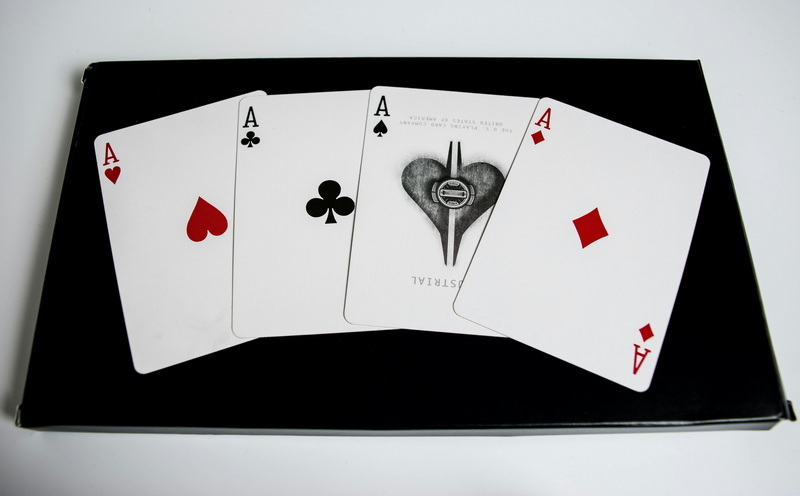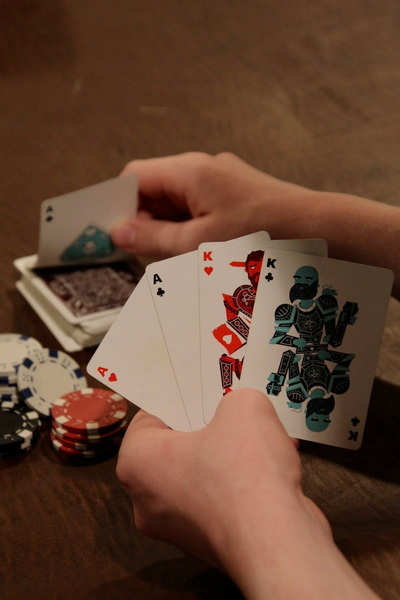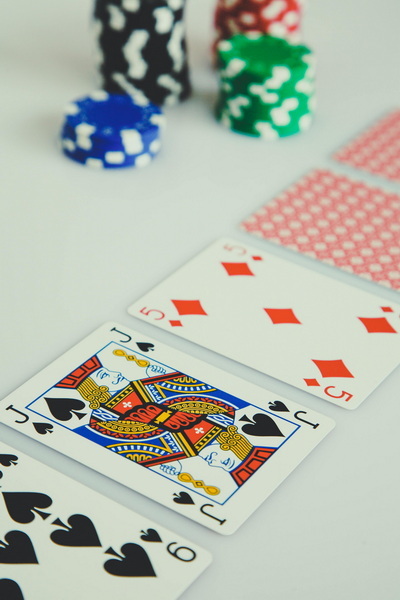Content Menu
● Setting Up the Game
>> Dealing the Cards
● Basic Rules and Gameplay
>> Objective
>> Starting the Game
>> Playing Tricks
>> Breaking Hearts
● Passing Cards
● Scoring
>> Shooting the Moon
● Strategies for Three-Player Hearts
>> Card Counting
>> Passing Strategically
>> Managing the Queen of Spades
>> Breaking Hearts
>> Voiding Suits
● Variations and House Rules
>> Jack of Diamonds Rule
>> Point Limit Adjustments
>> Passing Variations
● Conclusion
● Frequently Asked Questions
>> 1. How does the scoring differ in three-player Hearts compared to the four-player version?
>> 2. Can you still "shoot the moon" in three-player Hearts?
>> 3. How does the passing phase work in three-player Hearts?
>> 4. Are there any strategies unique to three-player Hearts?
>> 5. How long does a typical game of three-player Hearts last?
● Citations:
Hearts is a classic card game that traditionally involves four players, but it can be adapted for three players with some minor adjustments. This variation of Hearts offers a unique and exciting experience, allowing you to enjoy the game even when you're short one player. In this comprehensive guide, we'll explore the rules, strategies, and nuances of playing Hearts with three players.

Setting Up the Game
To begin playing Hearts with three players, you'll need a standard 52-card deck. Before dealing, remove the 2 of Diamonds from the deck, leaving you with 51 cards[1][4]. This adjustment ensures that each player receives an equal number of cards.
Dealing the Cards
Once you've removed the 2 of Diamonds, shuffle the remaining 51 cards thoroughly. Deal the cards clockwise, one at a time, until each player has 17 cards[1][7]. This distribution is crucial for maintaining balance in the game.
Basic Rules and Gameplay
The fundamental rules of Hearts remain largely unchanged in the three-player version. However, there are some key differences and considerations to keep in mind.
Objective
The goal of Hearts is to have the lowest score at the end of the game. Players accumulate points by taking certain cards in tricks, with Hearts cards worth one point each and the Queen of Spades worth 13 points[3].
Starting the Game
In a three-player game, the player holding the 3 of Clubs starts the first trick by playing that card[10]. This differs from the four-player version, where the 2 of Clubs typically initiates play.
Playing Tricks
Players must follow suit if possible. If a player doesn't have a card of the led suit, they can play any card from their hand[3]. The highest card of the led suit wins the trick, and the winner leads the next trick.
Breaking Hearts
Hearts cannot be led until they have been "broken" (played on a trick where a player couldn't follow suit). This rule adds an element of strategy to the game, as players must carefully consider when to introduce Hearts into play[3].

Passing Cards
The passing phase in three-player Hearts differs slightly from the four-player version. The rotation for passing is as follows:
1. First round: Pass three cards to the player on your left.
2. Second round: Pass three cards to the player on your right.
3. Third round: No passing occurs.
This cycle repeats throughout the game[7]. The passing phase allows players to strategically shape their hands and potentially burden opponents with high-scoring cards.
Scoring
Scoring in three-player Hearts follows the same principles as the four-player version:
- Each Heart card is worth one point.
- The Queen of Spades is worth 13 points.
- The goal is to avoid taking these point cards in tricks[3].
Shooting the Moon
A player who manages to capture all 13 Hearts and the Queen of Spades in a single hand has "shot the moon." This rare feat allows the player to either deduct 26 points from their own score or add 26 points to each opponent's score[6]. This rule adds an exciting element of risk and reward to the game.
Strategies for Three-Player Hearts
Playing Hearts with three players requires some adjustments to traditional strategies. Here are some tips to help you excel in this variation:
Card Counting
With fewer players, it becomes easier to keep track of which cards have been played. Pay close attention to the cards played in each trick, especially the high cards and point cards. This information can help you make more informed decisions about which cards to play and when.
Passing Strategically
When passing cards, consider not only getting rid of high cards but also how your passes might affect the other players. For example, passing the Ace of a suit to a player who you know has few cards in that suit can force them to take tricks they'd rather avoid.
Managing the Queen of Spades
The Queen of Spades is still a significant threat in three-player Hearts. Be cautious about holding onto high Spades, as you may find yourself forced to take the Queen. Conversely, if you have the Ace or King of Spades, you might consider keeping them to protect yourself from the Queen.
Breaking Hearts
Since there are fewer players, Hearts may be broken earlier in the game. Be prepared for this and adjust your strategy accordingly. Once Hearts are broken, consider leading low Hearts to force other players to play higher Hearts or risk taking the trick.
Voiding Suits
With 17 cards in your hand, you have more opportunities to void suits (get rid of all cards in a particular suit). This can be a powerful strategy, allowing you to discard point cards on tricks led in suits you no longer have.
Variations and House Rules
While the rules outlined above are standard for three-player Hearts, many groups incorporate house rules or variations to add excitement or balance to the game. Here are a few popular options:
Jack of Diamonds Rule
Some players incorporate the "Omnibus" variant, where capturing the Jack of Diamonds results in a 10-point deduction from your score[2]. This adds an extra layer of strategy and can lead to more aggressive play.
Point Limit Adjustments
Since there are fewer players, you might consider adjusting the point limit that ends the game. While 100 points is standard, you could lower it to 75 or raise it to 125 to shorten or lengthen the game, respectively.
Passing Variations
Some groups prefer to pass two cards instead of three, or to introduce a round where players pass one card to each opponent. Experiment with different passing rules to find what works best for your group.
Conclusion
Playing Hearts with three players offers a unique and engaging experience that maintains the essence of the classic game while introducing new strategic considerations. With fewer players, the game becomes more intimate and potentially more cutthroat, as each decision carries greater weight. By mastering the nuances of card passing, trick-taking, and point avoidance in this format, you can enjoy countless hours of competitive and entertaining gameplay.
Whether you're a seasoned Hearts player looking to adapt to a three-player setting or a newcomer to the game, this variation provides an excellent opportunity to hone your skills and enjoy the timeless appeal of Hearts. So gather two friends, remove that 2 of Diamonds, and dive into the exciting world of three-player Hearts!

Frequently Asked Questions
Here are five common questions about playing Hearts with three players, along with their answers:
1. How does the scoring differ in three-player Hearts compared to the four-player version?
The scoring in three-player Hearts remains the same as in the four-player version. Each Heart is worth one point, and the Queen of Spades is worth 13 points. The goal is still to have the lowest score at the end of the game. The main difference is that with fewer players, there's a higher chance of taking point cards, which can lead to more volatile scoring.
2. Can you still "shoot the moon" in three-player Hearts?
Yes, shooting the moon is still possible and follows the same rules as in four-player Hearts. If a player captures all 13 Hearts and the Queen of Spades in a single hand, they can choose to either deduct 26 points from their own score or add 26 points to each opponent's score. This feat is arguably more challenging in the three-player version due to the increased number of cards each player holds.
3. How does the passing phase work in three-player Hearts?
In three-player Hearts, the passing phase typically follows a three-round cycle. In the first round, players pass three cards to the left. In the second round, they pass three cards to the right. In the third round, no passing occurs. This cycle then repeats throughout the game. Some groups may choose to modify these rules, such as passing fewer cards or introducing a round where one card is passed to each opponent.
4. Are there any strategies unique to three-player Hearts?
Several strategies become more prominent in three-player Hearts. Card counting is more manageable and crucial with fewer players. Voiding suits is easier and can be a powerful tactic due to the larger hand size. Additionally, managing high cards becomes more critical, as there are fewer players to potentially take tricks containing point cards.
5. How long does a typical game of three-player Hearts last?
The duration of a three-player Hearts game can vary depending on the skill level of the players and any house rules in effect. Generally, a game might last anywhere from 30 minutes to an hour. If playing to a specific point total (e.g., 100 points), the game could potentially last longer. Some groups prefer to play a set number of hands rather than to a point total, which can help control the game's duration.
Citations:
[1] https://euchre.com/blog/how-to-play-hearts-with-3-players/
[2] https://www.howtoplaystuff.com/how-to-play-hearts/
[3] https://www.pokernews.com/card-games/hearts/hearts-rules-for-beginners.htm
[4] https://www.247hearts.com/news/how-to-play-hearts-3-players/
[5] https://www.familyeducation.com/entertainment-activities/games/indoor/how-play-hearts
[6] https://www.britannica.com/topic/hearts-card-game
[7] https://hearts.co/how-to-play-hearts-with-3-players
[8] https://en.wikipedia.org/wiki/Hearts_(card_game)
[9] https://www.officialgamerules.org/card-games/hearts
[10] https://www.thesprucecrafts.com/hearts-complete-card-game-rules-411730
































